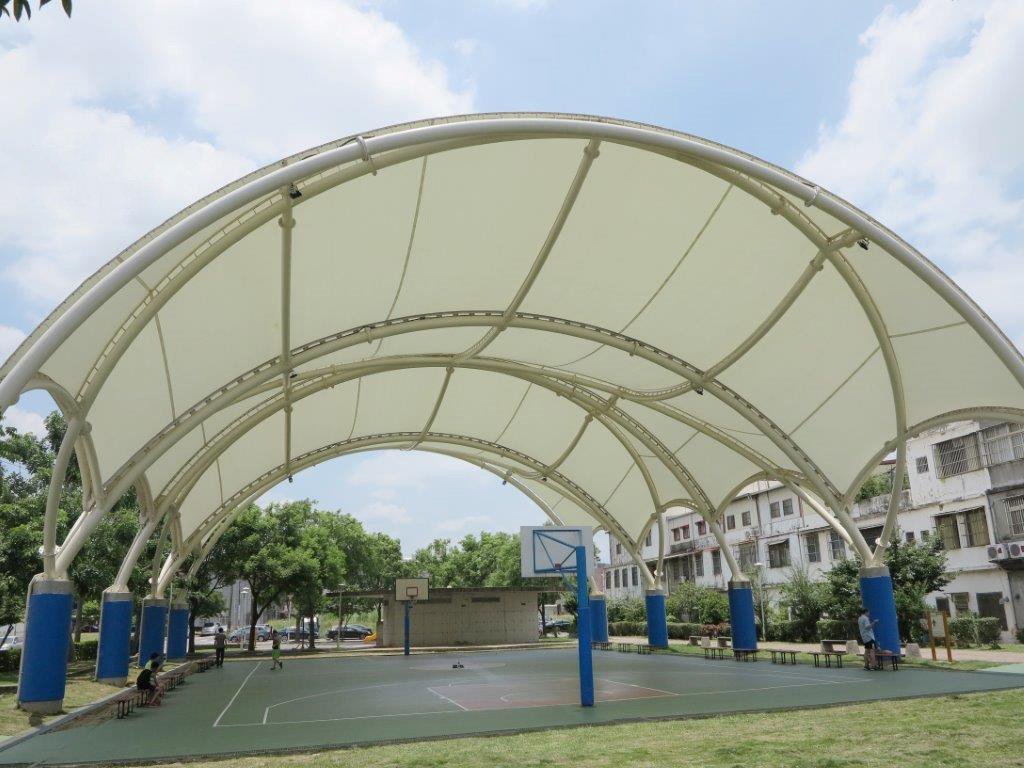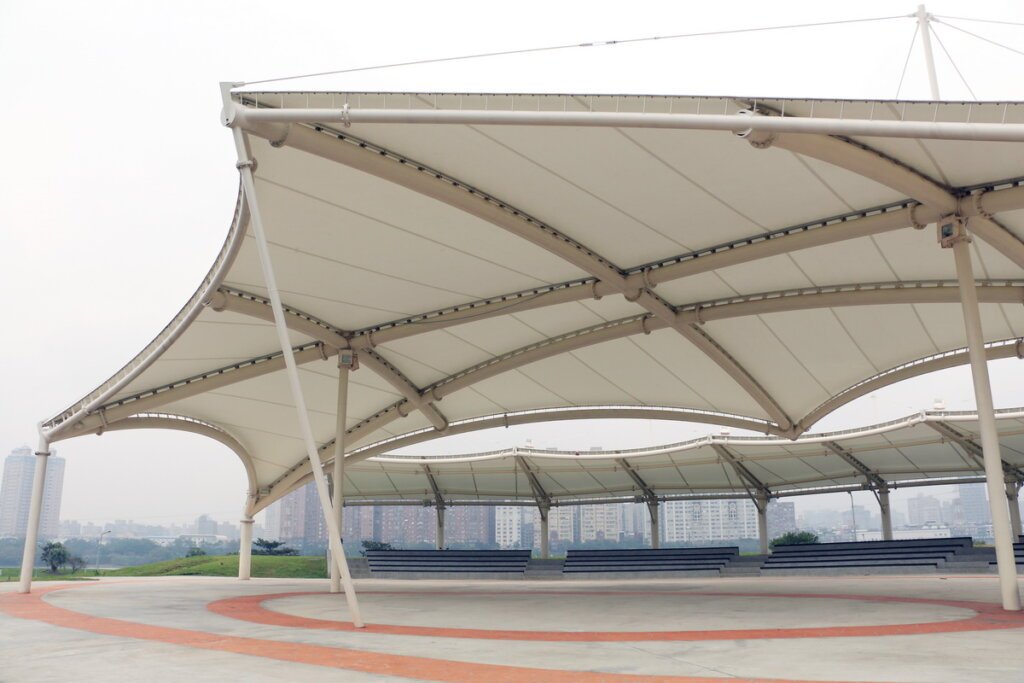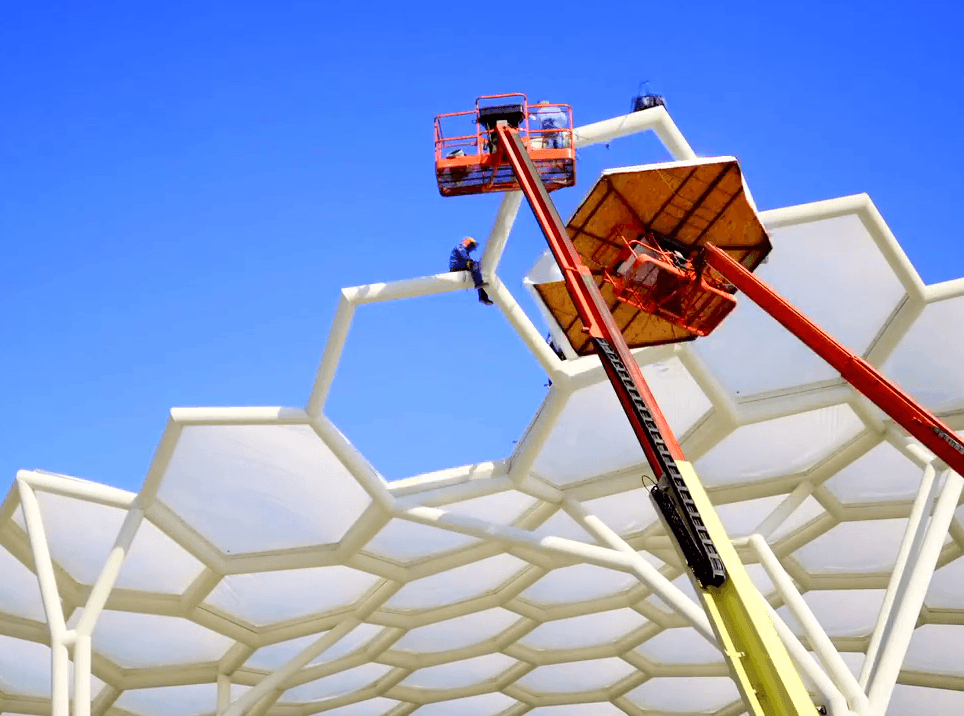So, what exactly are tensile structures? Simply put, they’re architectural systems made from high-strength fabric that create stable surfaces through tension or inflation. Their arrival has revolutionized the design of large-span spaces, offering more flexibility and creativity.
But what materials are these tension structures made of? The main ones are PTFE, PVC, and ETFE fabrics. PTFE is known for its strength and durability, while ETFE stands out for its self-cleaning properties, abrasion resistance, and high-temperature tolerance. These materials make tensile fabric structures not only lightweight and graceful but also stable and long-lasting.
Where can you find these fabric wonders? They’re everywhere—stadiums, plazas, large parking lots, commercial landscapes, you name it! Their aesthetic appeal, cost-effectiveness, and ability to span large areas open up endless possibilities for modern architecture.


And the benefits? Tensile fabric structures are truly impressive. They’re lightweight, translucent, and create a bright, airy atmosphere. Plus, their self-cleaning properties make maintenance a breeze. Even better, they have a short construction time, since most of the work is done in the factory, making on-site installation much simpler.

This type of structure is called prestressing and can be used in a variety of applications. If you are looking for a simple yet versatile tensile structure, a bulletproof saddle will serve you well.
